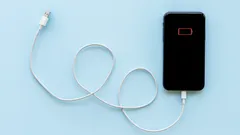155
7
4 minutes
Suggested Articles

Generative AI Is Quietly Transforming Workflow Automation Across America
Discover the latest breakthroughs in using generative AI to automate business workflows, boost productivity, and enhance process efficiency. Explore real-world examples, key challenges, and actionable strategies.

How AI and Micro-Credentials Are Reshaping Future Careers in Tech
AI & Everyday Tech

Unlock Your Productivity and Privacy With a Local AI Assistant on Your PC
AI & Everyday Tech

AI myths debunked: The real magic behind artificial intelligence revealed
AI & Everyday Tech

AI Is Revolutionizing Creative Careers—Here’s How Americans Are Thriving
AI & Everyday Tech

Generalist AI is revolutionizing daily life and powering a new tech era
AI & Everyday Tech

AI coding assistants like Copilot and ChatGPT are transforming developer workflows
AI & Everyday Tech

Transform your Android home screen with these folder organization tips
Smartphones & Apps

Former Hacker Reveals Secrets to Outsmart Cybercriminals and Protect Your Money
Online Safety & Privacy

Unlock Longer Phone Life and Lower Bills With This Charging Habit
Tech How-To Guides

Playing video games together strengthens relationships and sparks real connection
AI & Everyday Tech

US crypto pioneers transform bold risk into life-changing fortunes
AI & Everyday Tech

Tech leaders embrace waste-to-carbon solutions as Microsoft bets big on green AI
AI & Everyday Tech

Travelers and campers embrace portable backpack laundry tech for freedom and clean clothes anywhere
Gadgets & Reviews

Sleep experts champion a smart anti-snoring belt for restful nights and healthier mornings
Gadgets & Reviews

Drivers use Google Maps and Waze to avoid fines but risk safety trade-offs
AI & Everyday Tech

App lovers seize this week’s best free premium downloads before time runs out
Smartphones & Apps
 W3 CodeCraft
W3 CodeCraft

Comments